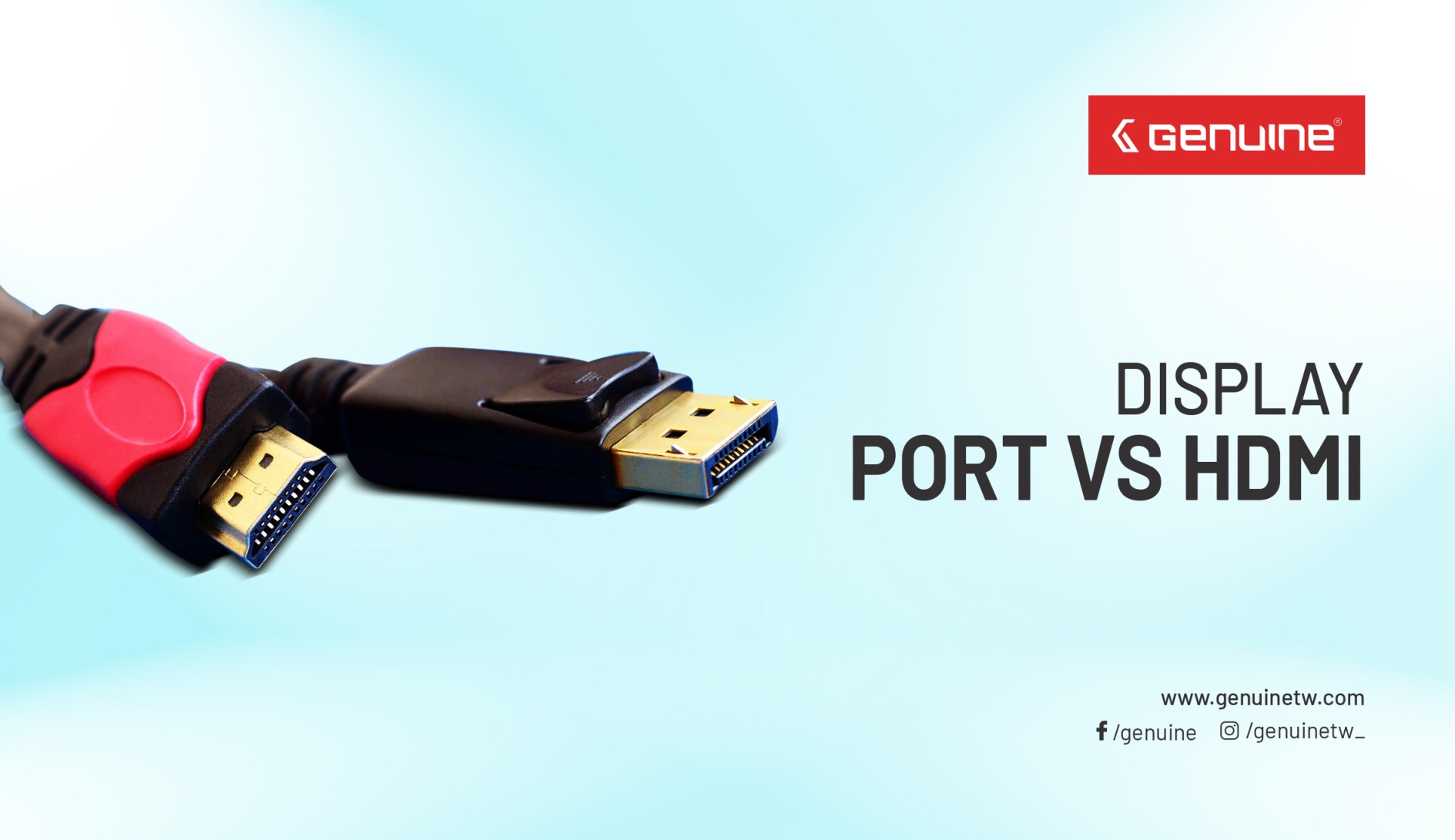
DisplayPort vs HDMI
DisplayPort (DP) is a digital display interface developed by a consortium of PC and chip manufacturers and standardized by the Video Electronics Standards Association (VESA). The interface is primarily used to connect a video source to a display device such as a computer monitor, and it can also carry audio, USB, and other forms of data.
DisplayPort was designed to replace VGA, FPD-Link, and Digital Visual Interface (DVI). The interface is backward compatible with other interfaces, such as HDMI and DVI, through the use of either active or passive adapters
HDMI (high definition multimedia interface) is the acknowledged connection standard for transferring video and audio digitally from a source to a video display device or other compatible home entertainment devices.
At a basic level, DisplayPort and HDMI achieve the same goal. They're a singular cable that can transfer both audio and video connections from a source to a display.
There have been many versions of both connectors over the years, with standards regularly leapfrogging each other as bandwidth improved to support higher resolutions and frame rates, new features, and advanced compression technologies.
In late 2020, the difference between DisplayPort and HDMI very much depends on which versions you're discussing. The two most commonly available standards are DisplayPort 1.4, and HDMI 2.0. Although you'll find more devices that support HDMI than DisplayPort, in this context the answer to the question, 'is DisplayPort better than HDMI,' is an emphatic, yes.
HDMI 2.0 supports a maximum bandwidth of 18 Gbps, which is enough to handle 4K resolution at up to 60Hz, or 1080p at up to 240Hz. In comparison, DisplayPort 1.4 has a maximum bandwidth of 32.4Gbps, which opens up much greater resolution and frame rate potential. It supports 4K resolution at up to 120Hz without compression, and 8K resolution at 30Hz – something HDMI 2.0 can't even manage with reduced chroma subsampling.
That paradigm is set to flip in 2021, however, as more devices and displays begin to support the new, HDMI 2.1 standard, which makes DisplayPort vs. HDMI gaming comparisons far more intriguing.
HDMI 2.1 more than doubles the maximum bandwidth to 48Gbps. That opens up support for 4K resolution at 144Hz, or 8K at 30Hz – and far more besides if you employ Display Stream Compression (DSC).
Both new generation consoles from Microsoft and Sony support HDMI 2.1, as do the new generation graphics cards from Nvidia and AMD. Although upgrading to any of these sources and an HDMI 2.1-capable TV wouldn't be cheap, HDMI 2.1 has the potential to settle the DisplayPort vs. HDMI battle.
DisplayPort 2.0 is likely to change things again, but adoption of that standard seems much further off and HDMI 2.1 fills any additional bandwidth demands that exist with current-generation hardware. For now.
